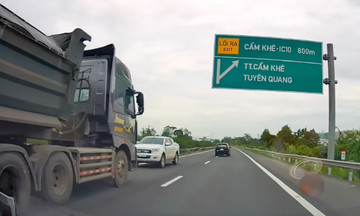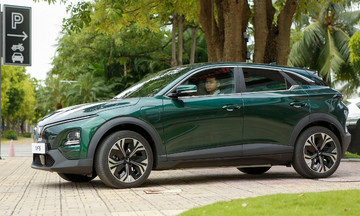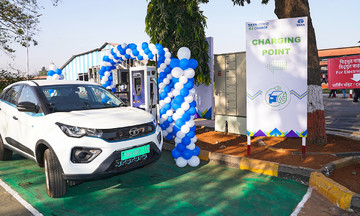While Tesla has yet to deliver on its promise of a more affordable electric vehicle this year, the company has unveiled a remarkable achievement: the world’s largest Supercharger station. Located in Lost Hills, California, the station currently features 84 operational charging stalls, all powered by solar energy. Tesla emphasizes that the station operates entirely off-grid.
By the end of the year, with all 168 planned stalls operational, the Lost Hills location will officially become Tesla's largest Supercharger station. This expansion will solidify its position as a testament to sustainable charging, independent of both fossil fuels and the power grid.
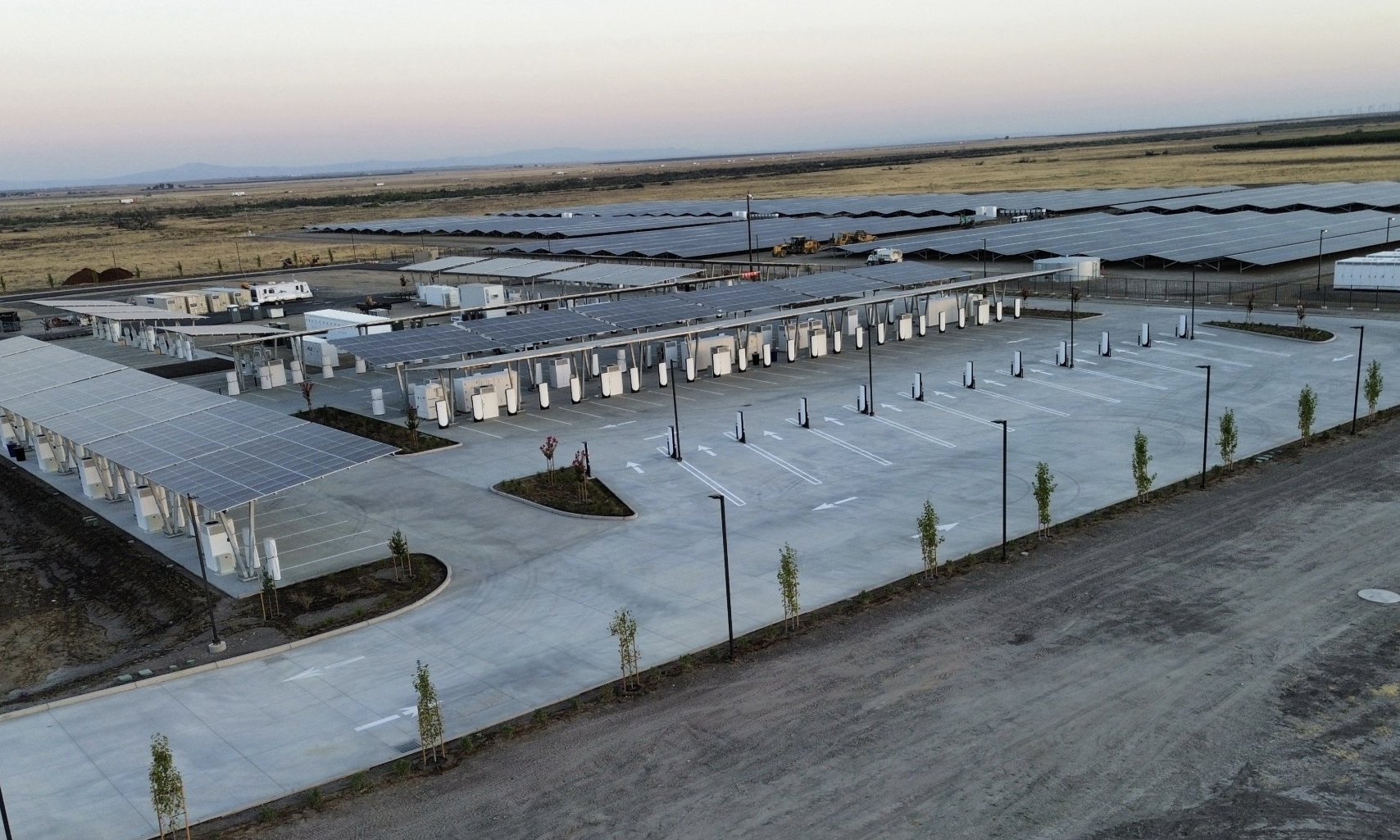 |
The newly opened Tesla Supercharger station in Lost Hills, featuring solar panels on the roof. Photo: Tesla |
The newly opened Tesla Supercharger station in Lost Hills, featuring solar panels on the roof. Photo: Tesla
The station's opening coincided with the enactment of the "One Bad Big Beautiful Act" (OBBBA), which rolled back incentives for clean energy programs. Despite downsizing its Supercharger development team in 2024, Tesla continues to make strides in this area.
The new station maximizes solar energy utilization. Solar panels cover all available roof space, and a large solar farm sits adjacent to the parking area. Together, these generate 11 MW of power, stored in 10 Megapacks – stationary lithium-ion battery systems designed for large-scale energy storage. Each Megapack has its own inverter and can receive software updates remotely. The combined storage capacity of the 10 Megapacks is approximately 39 MWh, with each unit holding 3.9 MWh. This substantial energy reserve enables the station to handle hundreds of charging cycles daily, supporting a sustainable and emission-free driving experience.
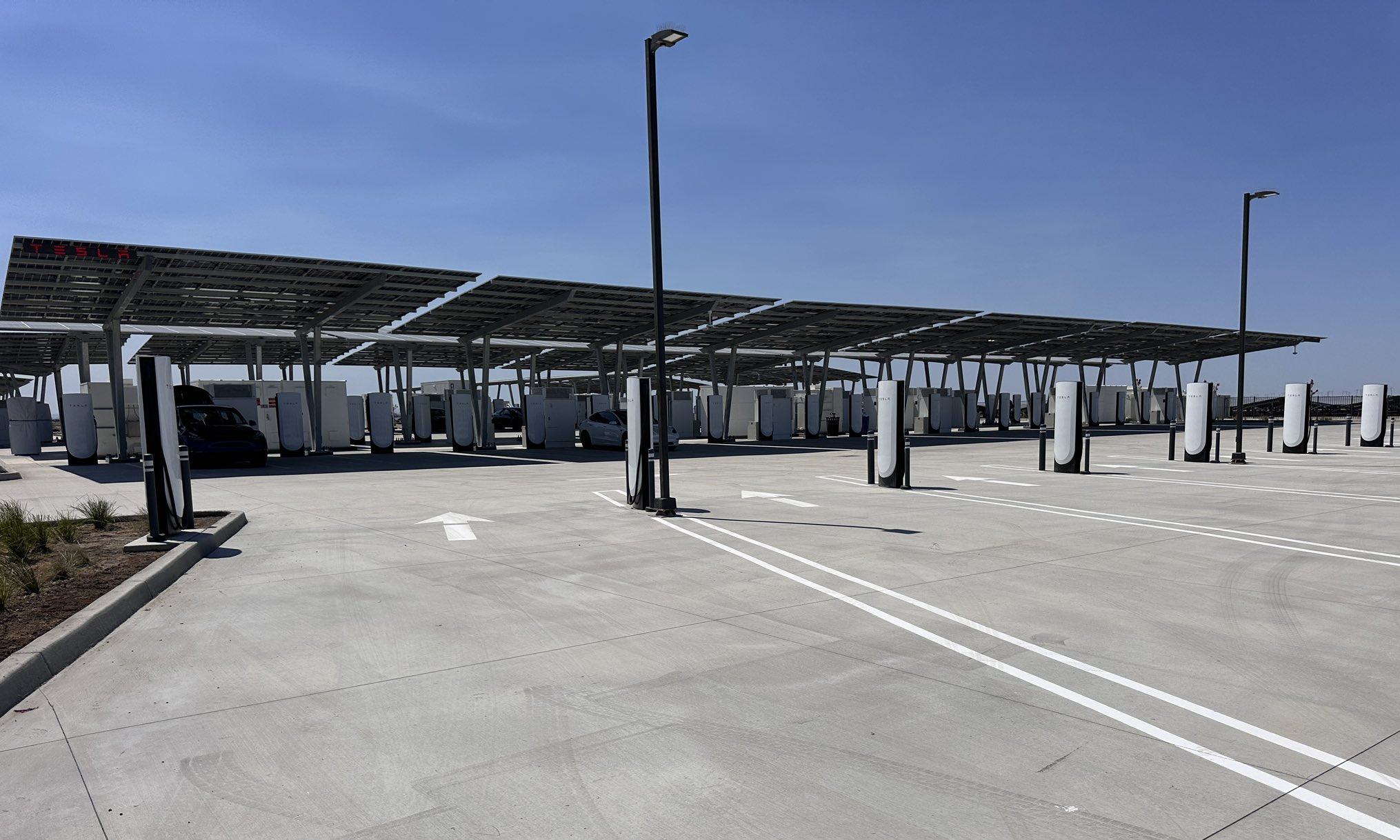 |
The station is already operational, welcoming its first customers. Photo: Tesla |
The station is already operational, welcoming its first customers. Photo: Tesla
While the current 84 stalls run entirely on solar power, it remains unclear whether all 168 stalls will maintain this off-grid functionality once fully operational.
Theoretically, the location could remain operational even during power outages, thanks to its solar power generation and storage capabilities. Operating off-grid also offers other advantages. Tesla reports that the station was completed in just eight months. Its reliance on solar power rather than the local grid likely streamlined the permitting process.
The Barstow Supercharger station, currently the largest operating Supercharger site in the US with 120 stalls, will soon be surpassed by the Lost Hills location.
This new addition strengthens Tesla’s already extensive and growing Supercharger network. According to the Alternative Fuels Data Center (AFDC), Tesla operates nearly 2,700 Supercharger locations in the US, with almost 32,000 individual stalls. Last year’s layoffs—and subsequent rehiring—within the Supercharger team suggest the automaker might be moderating its rapid network expansion.
My Anh (via InsideEVs)



